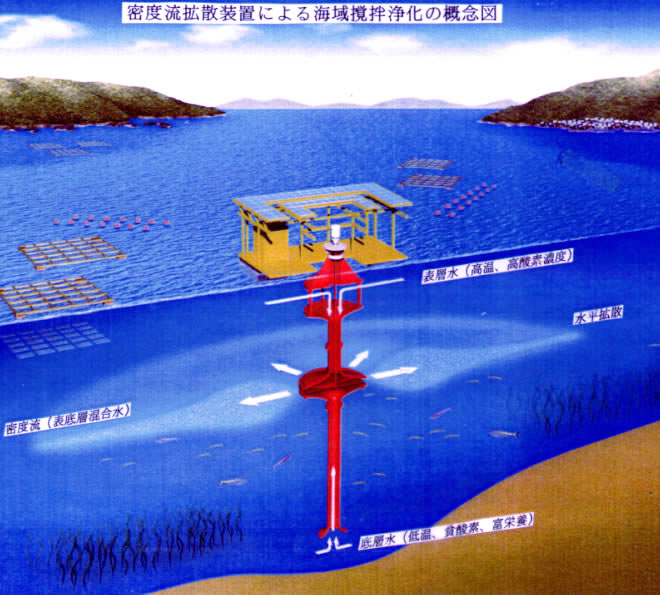Creating a fishing ground by pumping up Deep Ocean Water (DOW)
In 2000 our company was commissioned by Marino-Forum 21, an affiliate organization of the Fisheries Agency to conduct 5-year project management for the development, design, manufacture, installation and operation of the ocean nutrient enhancer TAKUMI.
Outline of Ocean Nutrient Enhancer TAKUMI
- Deep ocean water with low water temperature and rich in nutrients such as nitrogen and phosphorus is pumped up. It is mixed with a warmer surface water to adjust its density. Then it is discharged into the euphotic layer where it remains as density current at well-lighted depth in the ocean.
- The Nutrient-rich, fertile water masses in the euphotic layer are exposed to sunlight, which stimulates photosynthesis and growth of phytoplankton.
- Over time, the increased phytoplankton will create richer food chain by being eaten by zooplankton – small fish – large fish, which is resulted in creating fishing ground in the surrounding waters.
- The float is semi-submersible spar type which greatly reduces rolling and helps to withstand severe wind and wave of open sea. The float and a riser pipe (steel) for an extraction of deep ocean water are connected by chains and flexible pipe with pin connection.
- This floating structure has a diesel generator installed to provide power for pumps. All equipments are operated unmanned, and various data are transmitted wirelessly to land for operation control and replenishment.
- The float is moored at a single point by catenary system using chains, wires and concrete sinkers.
- The installation work was done using the Upending method, which involves towing a 175m riser pipe horizontally and setting it up vertically by releasing it in gravity on site.
- The installation area is located at 35°05′22″N, 139°25′29″E, and 980m deep near the Miura knoll, about 25km away from Hiratsuka in Sagami Bay. We selected the area near the center of counterclockwise flow, which often occurs in Sagami Bay, where pumped nutrients can remain at a high concentration and have a high potential for fertility enhancement.
- Onshore support facilities such as a data reception station in land was established in the Kanagawa Fisheries Research Institute in Jogashima.
| Total height | 213m |
| Max. diameter | 16.8m |
| Draft | 205m |
| Displacement | 1,700t |
| Inner diameter of Riser pipe | 1.0m |
| Water depth at discharge point | 20m |
| Mooring water depth | 1,000m |
| Diesel generator output (rated) | 115kw |
| Deep Ocean Water intake capacity | 100,000m3/day |
| Surface Water intake capacity | 200,000m3/day |
| Mix Water discharge capacity | 300,000m3/day |
Participating companies in the R&D of TAKUMI
| Ouchi Ocean Consultant, Inc. | Overall System (Project Leader) |
| IHI Marine United Inc. | Floating Structures and Equipment Installation |
| JFE Engineering Inc. | Riser Pipes |
| Nakashima Propeller Inc. | Water Pump and Diesel Generator |
| Japan Radio Co., Ltd. System Intec Co. | Monitoring, Instrumentation and Communication equipment |
| Zeni Lite Buoy Co., Ltd. | Lighting equipment |
| Mitsubishi Heavy Industries, Ltd. | Mooring System Design |
| TOA CORPORATION | Installation works |
| MOL Techno-Trade, Ltd | Operation and Maintenance |
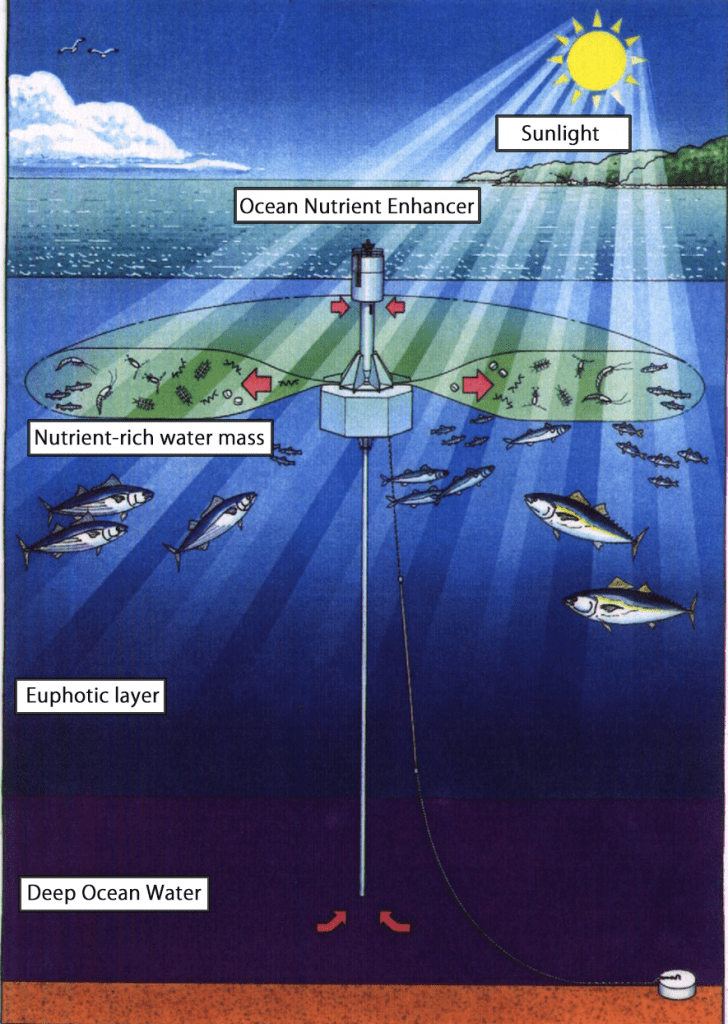

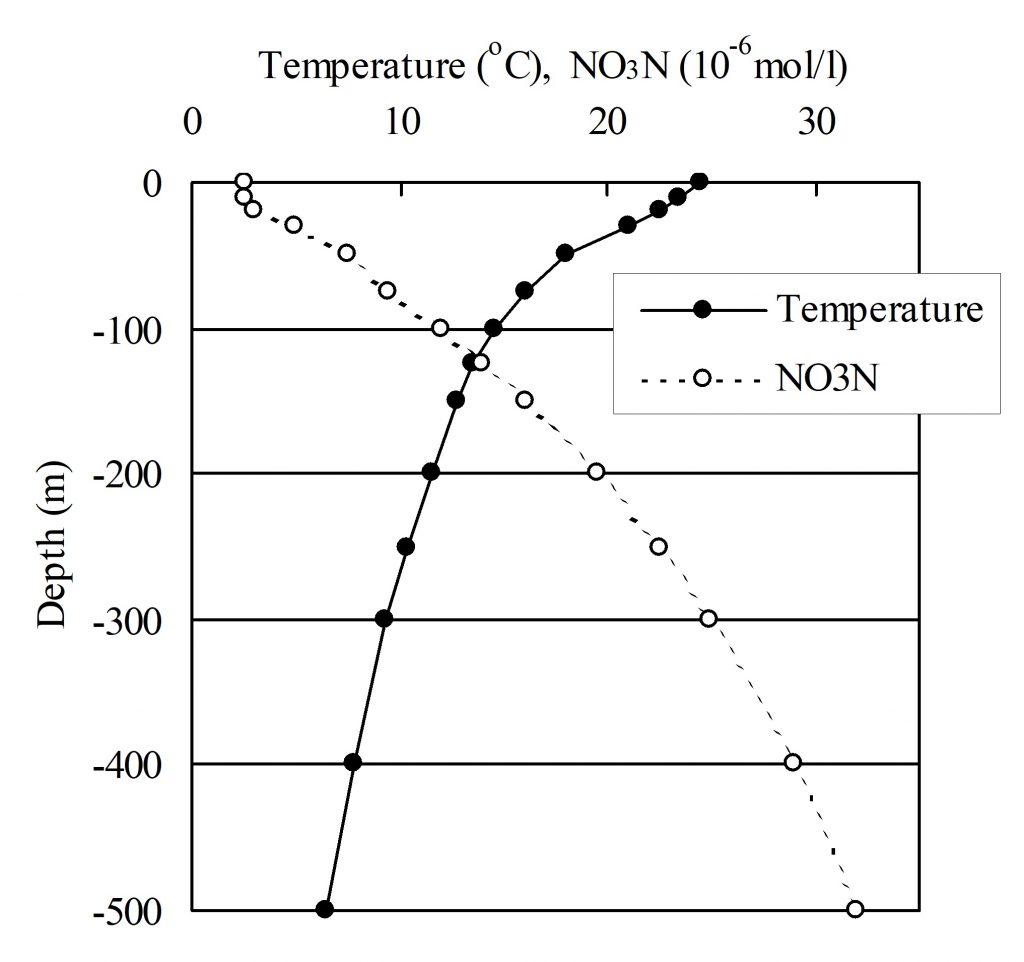


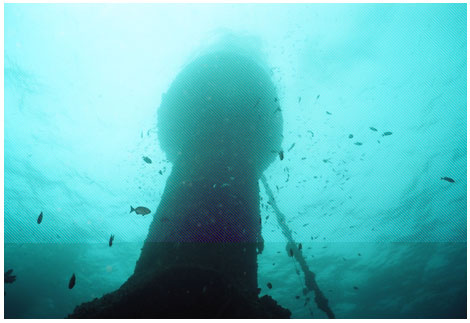
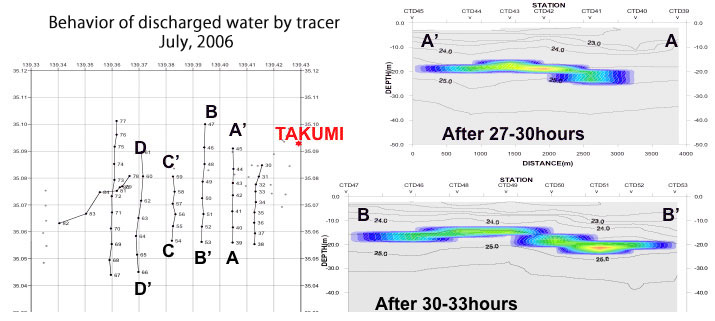
Large-scale/diverse usage of DOW (Deep Ocean Water)
Our company is researching energy production using DOW (Deep Ocean Water) in preparation for upcoming hydrogen energy society that does not emit CO2. In particular, OTEC (Ocean Thermal Energy Conversion), which uses DOW in tropical regions, is considered to be the most promising means of obtaining energy. We are researching a practical application of these facilities as energy and food production infrastructures, in combination with creating fishing ground through ocean nutrient enhancement.
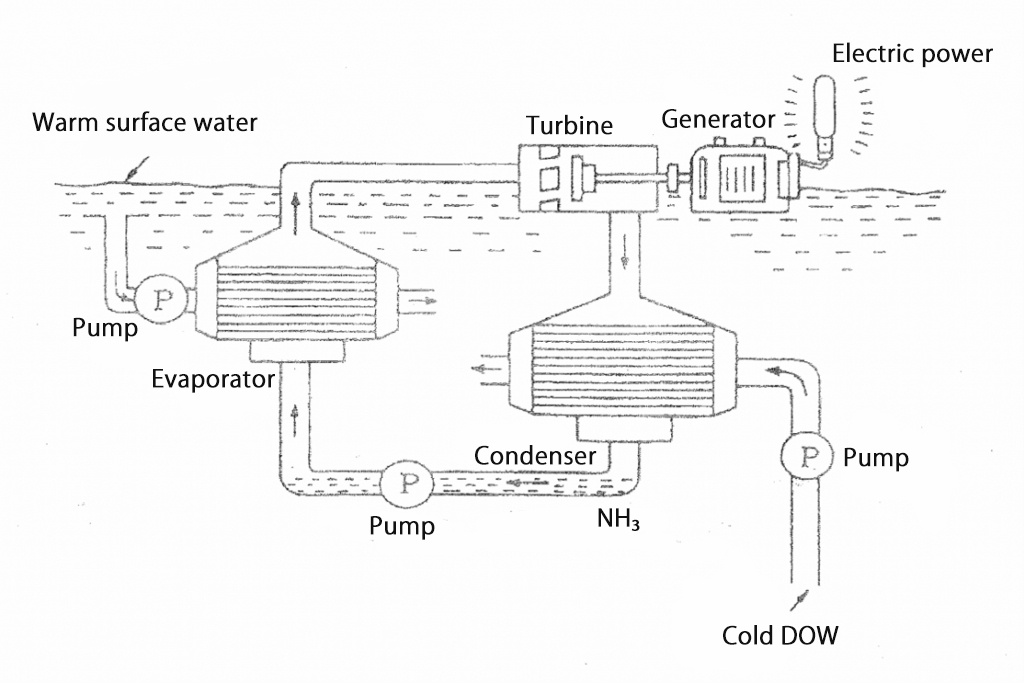
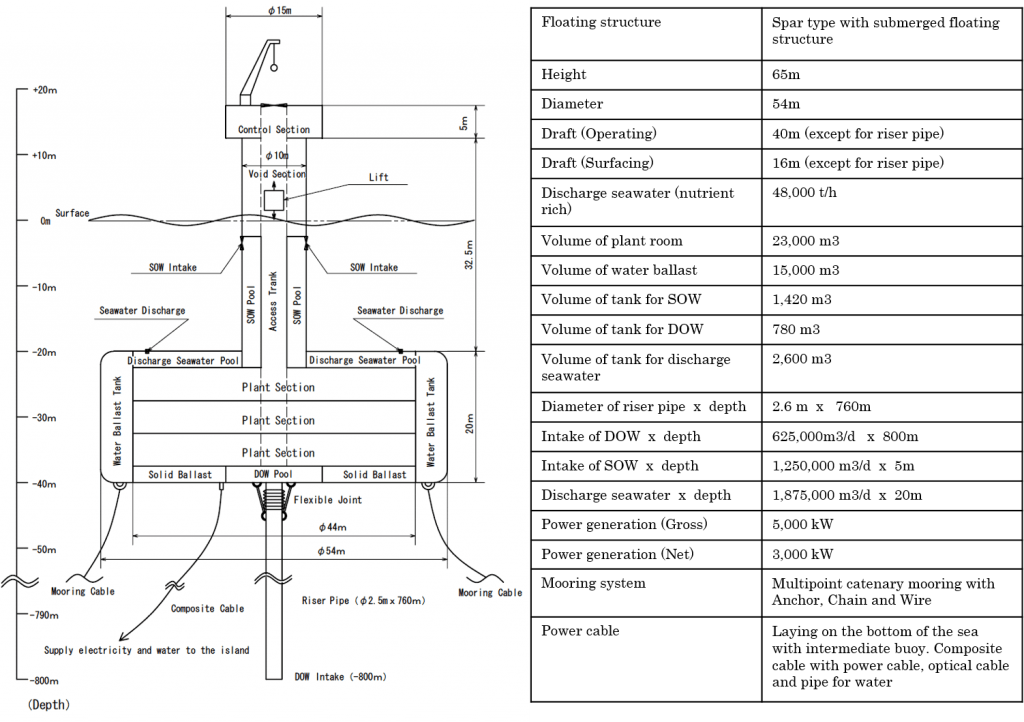
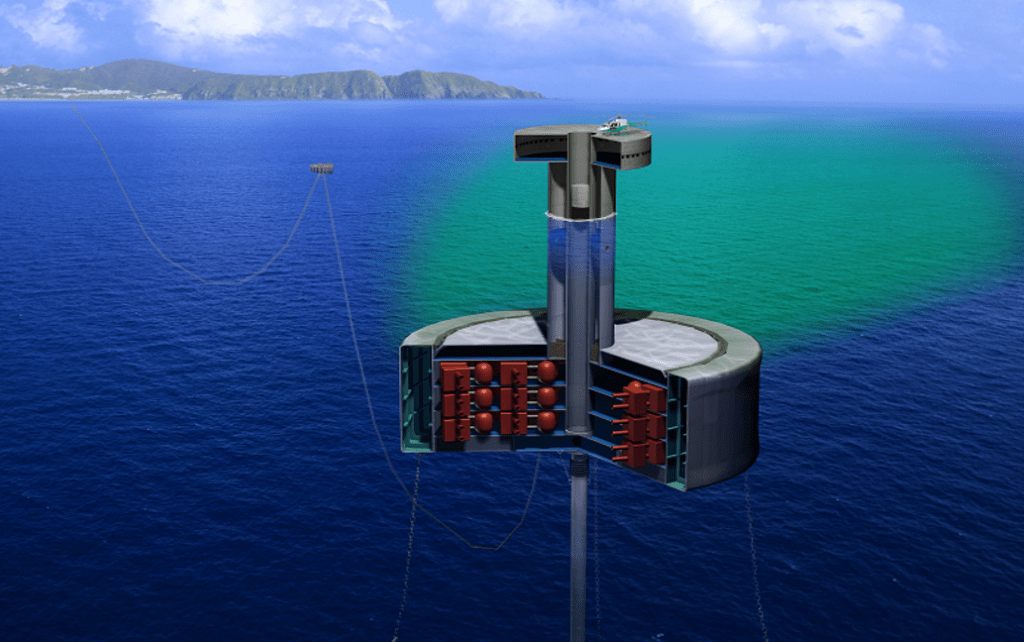
Improvement of water quality in closed bays/lakes by using density currents
Just as in the oceans, in coastal closed bays and inland lakes, especially in the summer months, thermal stratification occurs at depth and the vertical circulation of water is almost completely eliminated. In recent years, as nutrients have flowed into a sea from a land, water pollution due to eutrophication (over-fertilization) has become a problem. This has led to anaerobic bottom layers, red tides and blue-green algae. Our company has developed a Density Current Generator (DCG), which focuses at slow, horizontal flow of density currents in stratified waters. In 1997, we installed the actual equipment in Gokasho Bay, Mie Prefecture. This contributed to improvement of water quality. We provide consultation on the use of Density Current Generation Systems to create flow in the sea, reduce water pollution caused by overnutrition, and restore seaweed beds and fisheries that have been disappearing.
